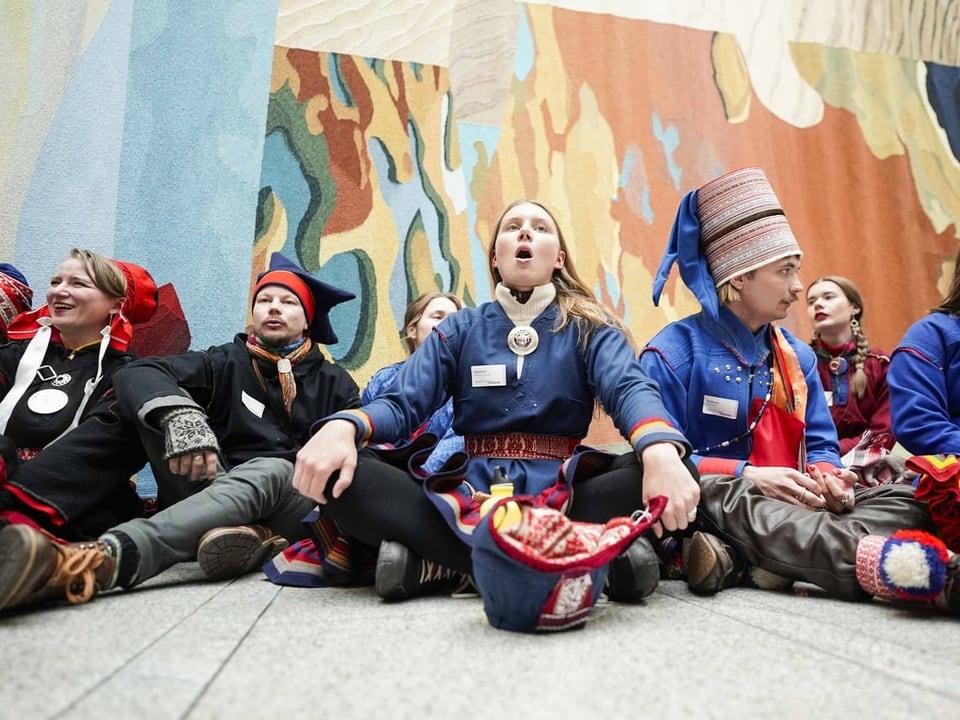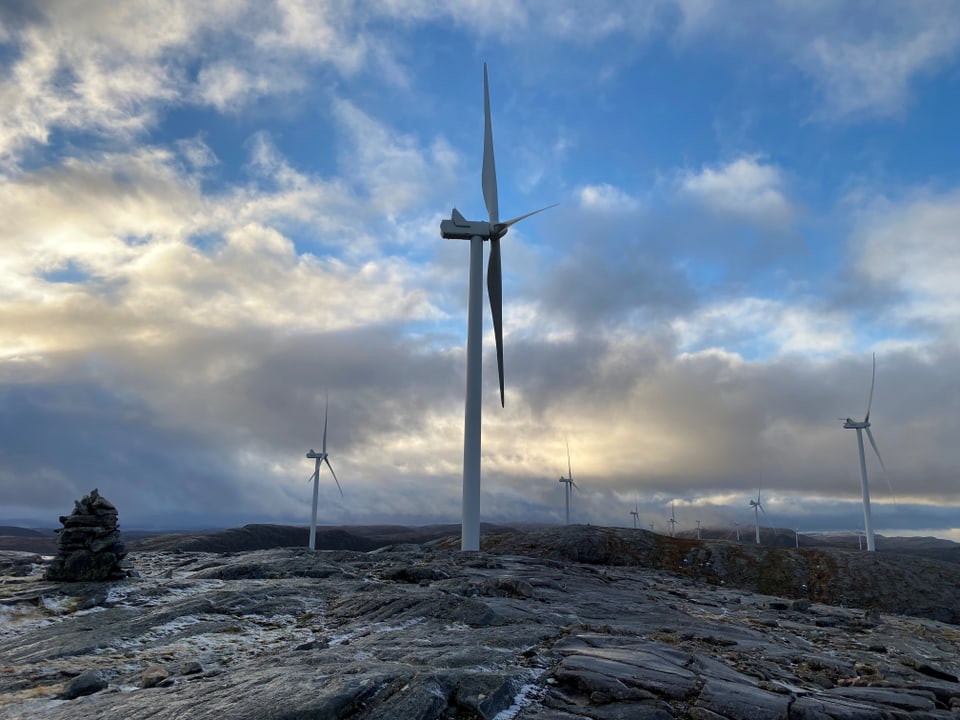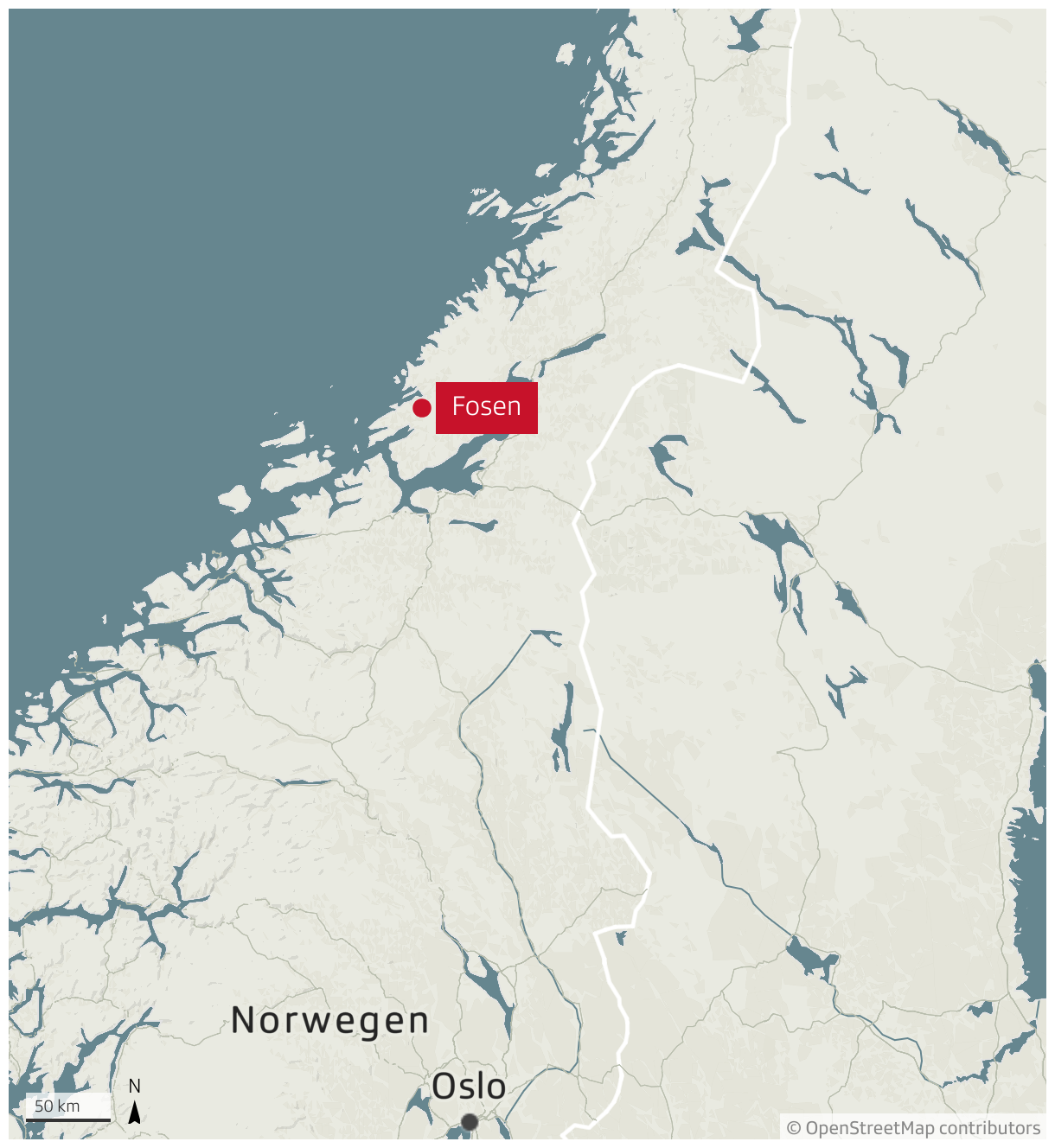Contents
Europe’s largest onshore wind turbine in Norway continues to operate despite being declared illegal by the Supreme Court. The indigenous Sami population with their reindeer are demanding the demolition of the wind farm, in which the Swiss BKW is also involved.
The largest onshore wind turbine in Europe went online three years ago on the Fosen peninsula in central Norway. A year later, however, the Supreme Court in Oslo ruled that this facility violated human rights under the UN Charter for the Protection of Indigenous Peoples.
However, the court failed to decide whether the billion-dollar project, in which the Swiss BKW indirectly holds an 11 percent stake, had to be demolished or not.
The facility is illegal. A court cannot be clearer.
Nevertheless, the historical judgment leaves no room for doubt in its clarity, explained the lawyer Hans Petter Graver at a recent lecture in Oslo: “The rights of the Sami population were violated in this case. Therefore the facility is illegal. A court cannot be clearer,” explained the professor of private law at the University of Oslo.
As a result of the court ruling, the Norwegian government has now apologized to the Sami affected. However, she does not want to know anything about the “Fosen Vind” facility being closed and demolished, as the Sami are demanding.
Sami loses patience
In the halls of the Norwegian Parliament and on the streets in the center of Oslo, an unusual number of Sami songs, so-called joiks, can be heard these days: Hundreds of mainly young Sami are currently loudly protesting against the Norwegian government’s inaction on an issue that affects the indigenous population in the country for decades: namely, that the important Sámi reindeer herding areas are being used by the Norwegian state for energy production.
The patience of those affected is dwindling, said Sami spokeswoman Ella Marie Hætta Isaksen this week: “The violation of our human rights continues every day. That must have an end. Now!” said the Sami representative during a protest in front of parliament.
In the eyes of legal expert Graver, the Norwegian government and therefore the companies operating the Fosen plant are playing a risky game. If the Sami go to court to demand that the facility be closed and demolished, the outcome is very open. “In a court case, the Norwegian state would probably have difficulty defending the continued operation of the plant,” estimates Graver.
Difficult arbitration process
Now the political leaders and the owners have to offer a hand for an agreement that the affected reindeer herders can live with. It is becoming apparent that, as was the case 50 years ago in the conflict over the hydroelectric power plant in northern Norway, far-reaching political concessions will have to be made to the Sámi population.
At that time, among other things, it was decided to create a Sami parliament and sign the UN Convention on the Rights of Indigenous Peoples. A further strengthening of the rights of the Sami in Norway is now on the agenda.


